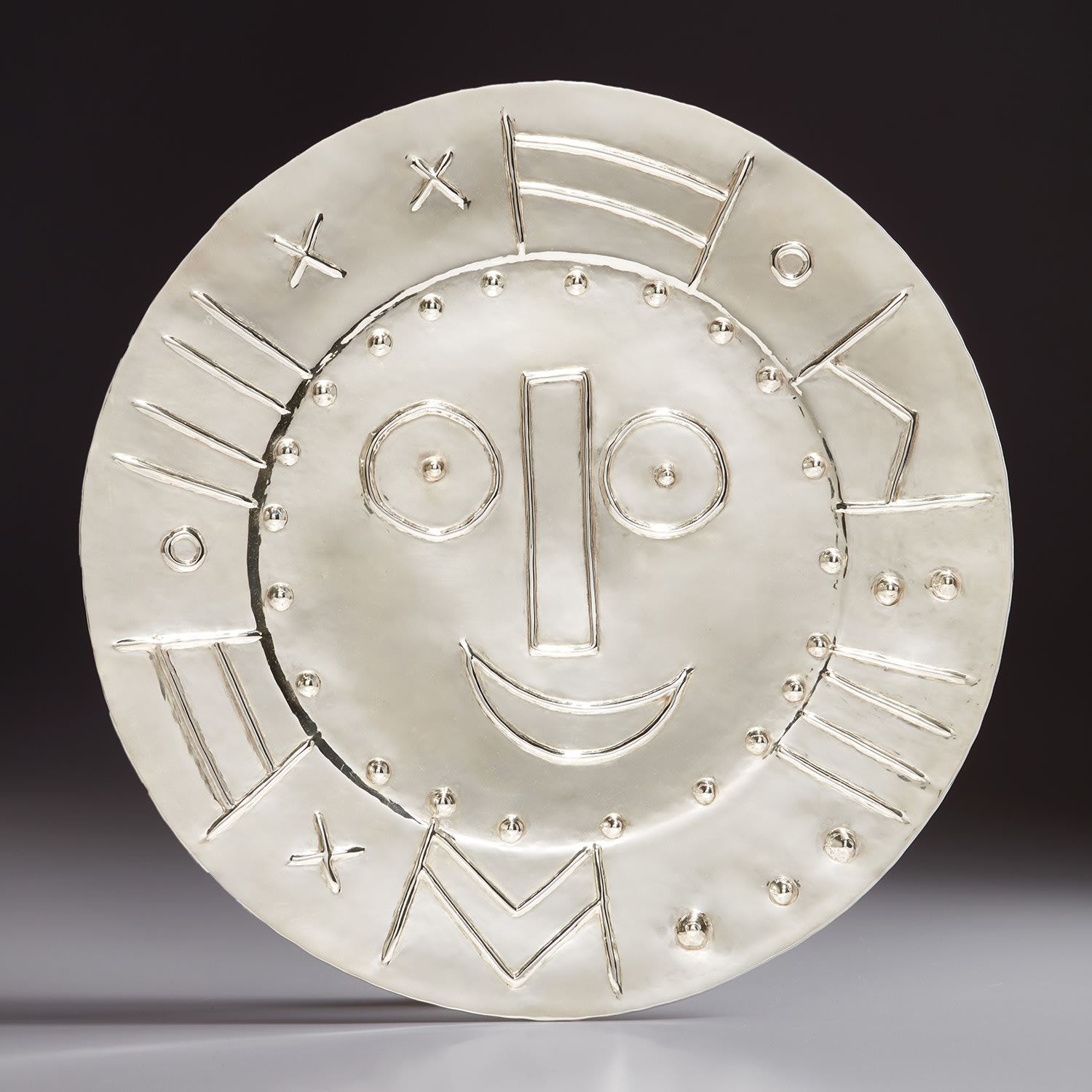



41
Pablo Picasso
Tête en forme d'horloge (Clock-shaped head)
Full-Cataloguing
Picasso did not know anyone who could undertake the project so Cooper proposed that he enlist the silversmiths François and Pierre Hugo. Picasso turned over a series 24 ceramic of biscuit platters to the Hugos who used them to make molds. He chose examples with strong sculpting and gauging of the image, and interesting textures where he had used mesh, wicker or cardboard on the surface. Using these molds, the Hugos carefully hammered thin sheets of silver to capture every nuance of the form and texture. This meticulous repoussé technique and the use of precious metal recall the work of traditional craftsmen, as Picasso had wanted. In 1967, Picasso authorized the Hugos to produce 19 of these plates in small numbered editions of 20 and a few different proofs.
Pablo Picasso
Spanish | B. 1881 D. 1973One of the most dominant and influential artists of the 20th century, Pablo Picasso was a master of endless reinvention. While significantly contributing to the movements of Surrealism, Neoclassicism and Expressionism, he is best known for pioneering the groundbreaking movement of Cubism alongside fellow artist Georges Braque in the 1910s. In his practice, he drew on African and Iberian visual culture as well as the developments in the fast-changing world around him.
Throughout his long and prolific career, the Spanish-born artist consistently pushed the boundaries of art to new extremes. Picasso's oeuvre is famously characterized by a radical diversity of styles, ranging from his early forays in Cubism to his Classical Period and his later more gestural expressionist work, and a diverse array of media including printmaking, drawing, ceramics and sculpture as well as theater sets and costumes designs.